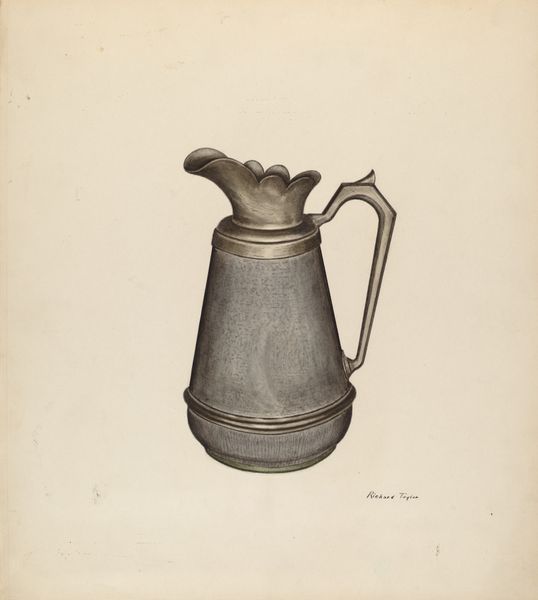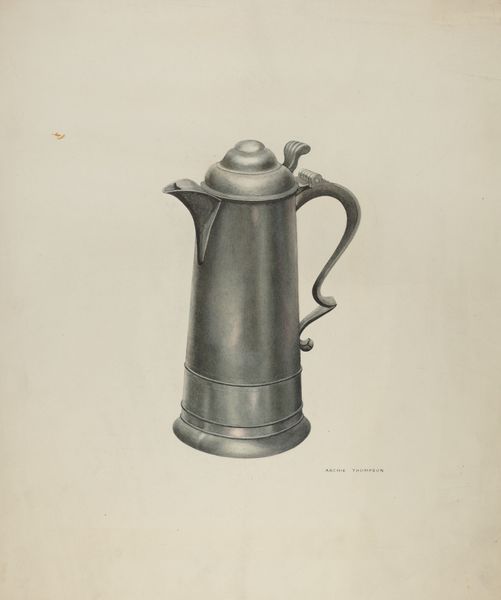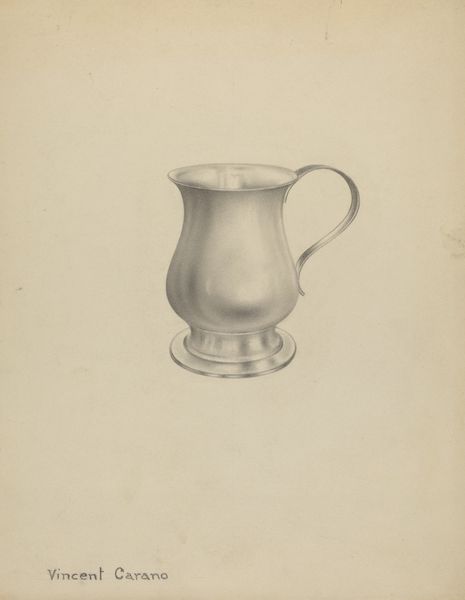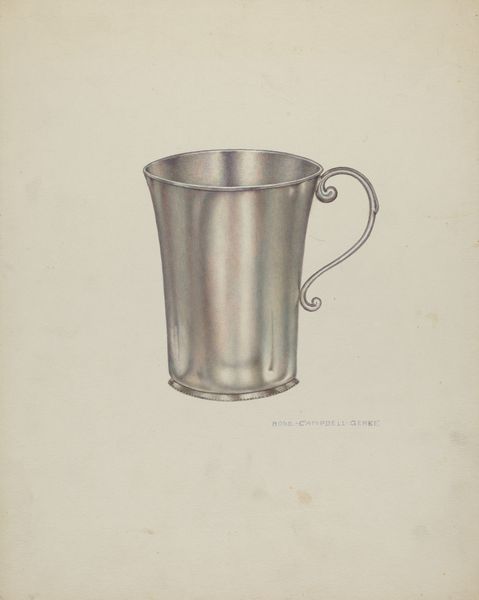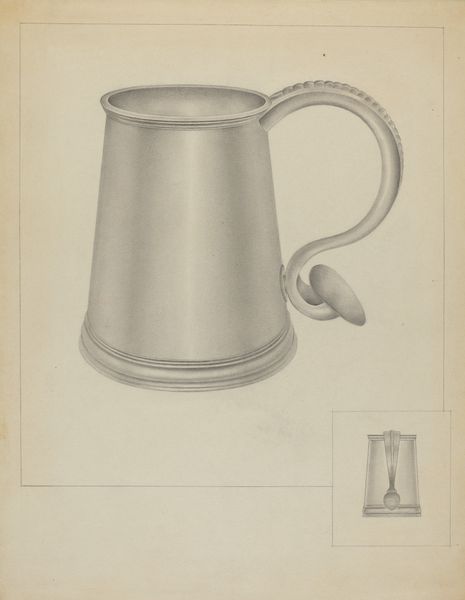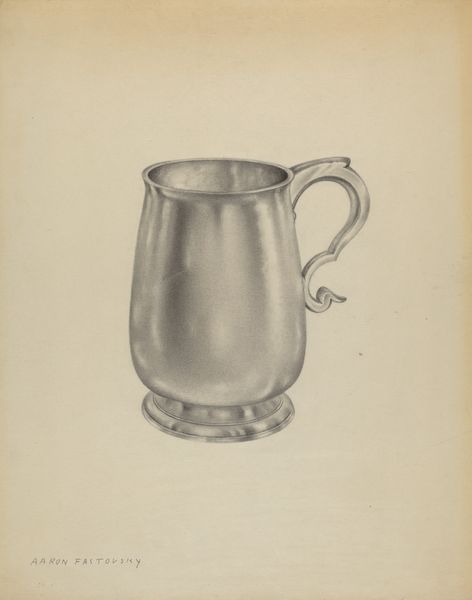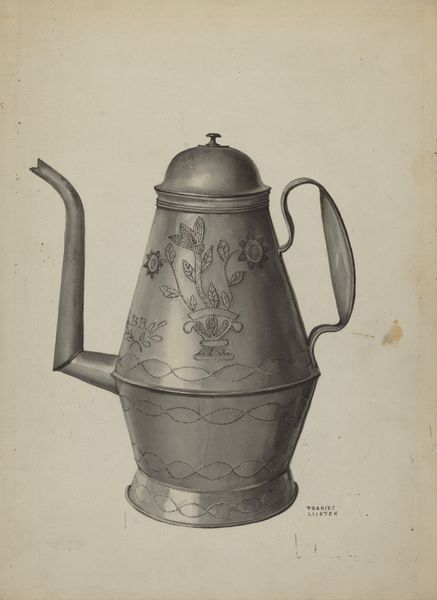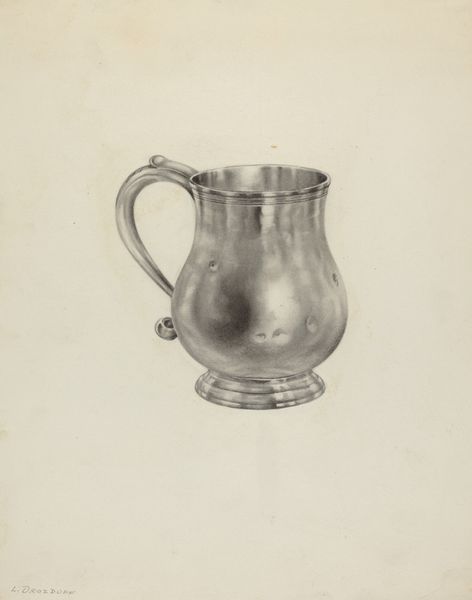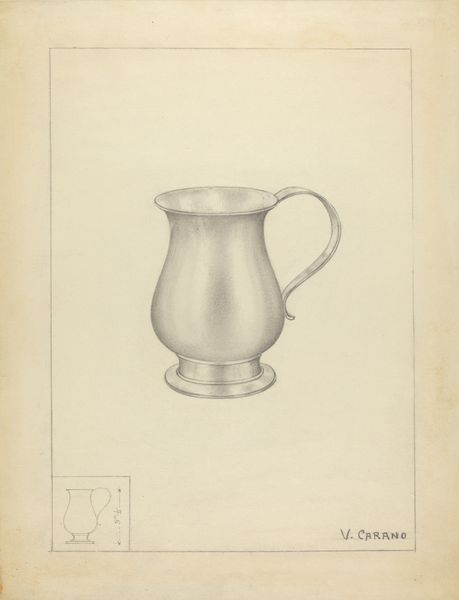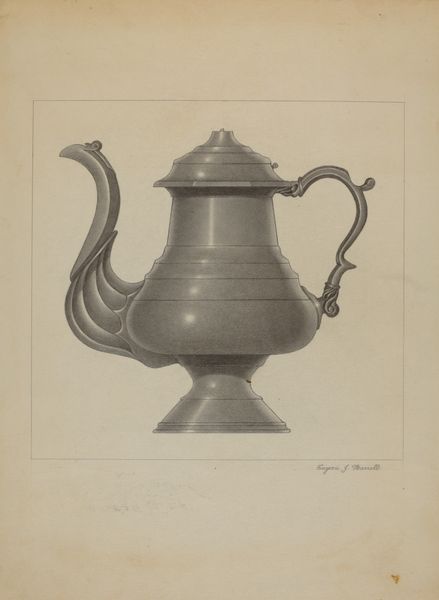
drawing, pencil
#
drawing
#
pencil drawing
#
pencil
#
realism
Dimensions: overall: 35.7 x 27.9 cm (14 1/16 x 11 in.)
Copyright: National Gallery of Art: CC0 1.0
Editor: So, this is Rose Campbell-Gerke's "Miner's Oil Lamp," a pencil drawing done sometime between 1935 and 1942. It’s a surprisingly detailed depiction of an everyday object, almost like a technical drawing. What do you see when you look at it? Curator: Well, first I consider when it was made, in the midst of the Great Depression. Artists involved in the WPA, the Works Progress Administration, were tasked with documenting American life. Something seemingly simple as an oil lamp becomes a potent symbol. It is, in some ways, about illuminating the plight of the working class. Why document such a utilitarian item? Editor: That's fascinating. I hadn’t considered the socio-political implications. So, the choice of subject matter itself speaks volumes? Curator: Exactly! And the realism; the artist has rendered this lamp with almost clinical precision. It isn't romanticized. This object represents labor, hardship, and resilience. And who sees these works? It speaks to a broader public about the unsung heroes of American industry. How do museums elevate items connected to labor? Editor: So by exhibiting it, aren’t we almost sanctifying it? Turning the mundane into something worthy of reverence? Curator: Precisely. And what does that act of elevation say about us, the viewers, and our relationship with labor in modern society? Do you feel a sense of nostalgia for a "simpler time," or a critical perspective on labor exploitation? The way we interpret this image is deeply impacted by our own values. Editor: That's so insightful. I originally saw it as just a still life, but now I understand it's so much more layered than that. I definitely have a greater understanding of this image and what the artist could have wanted to display. Curator: It's all about contextualization; placing the artwork within its social and historical moment.
Comments
No comments
Be the first to comment and join the conversation on the ultimate creative platform.
